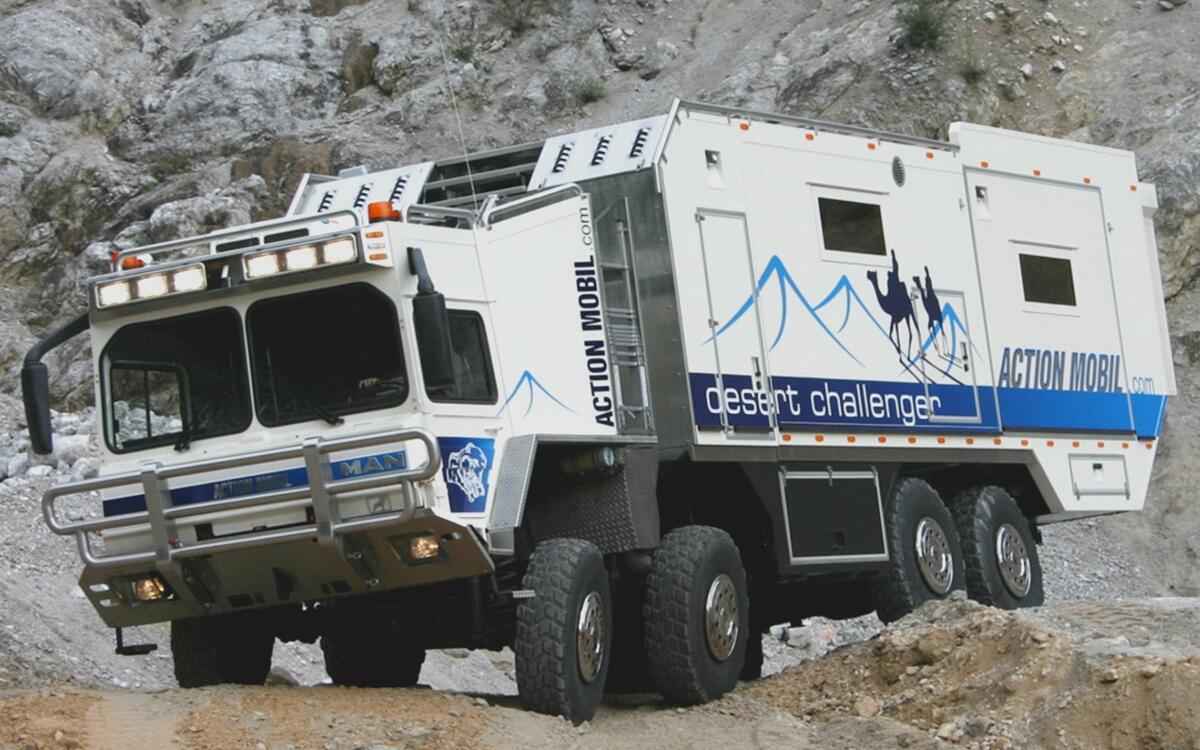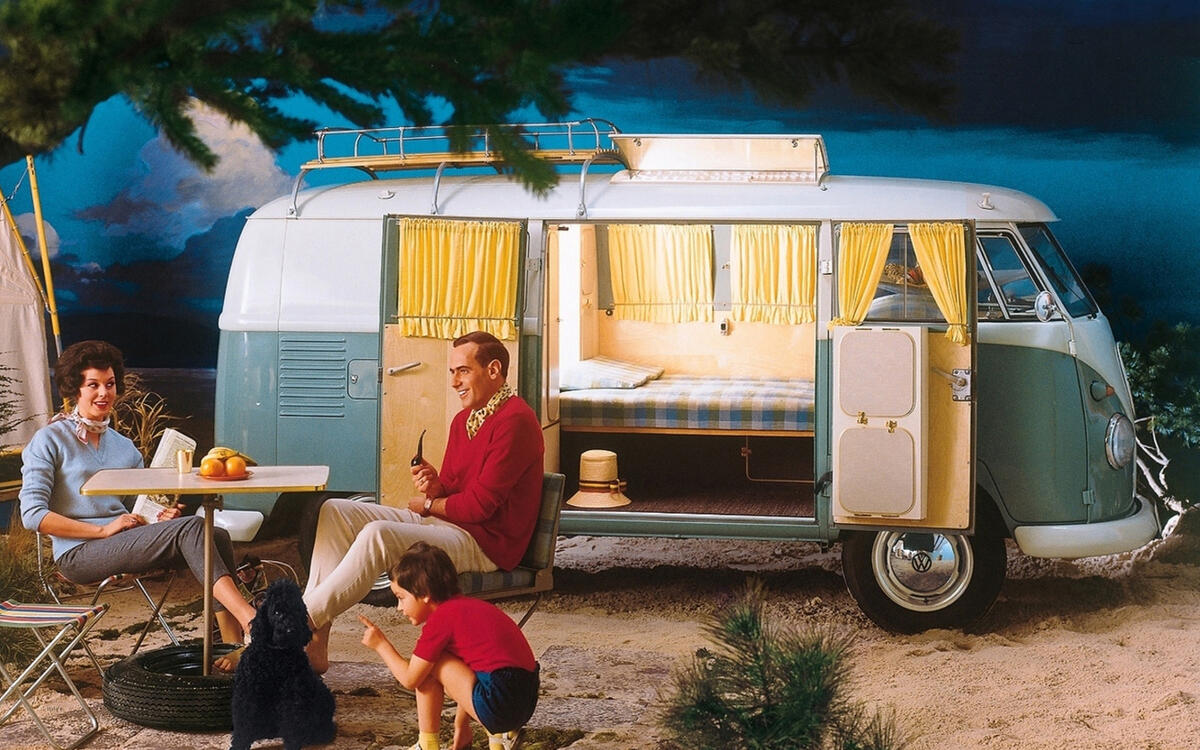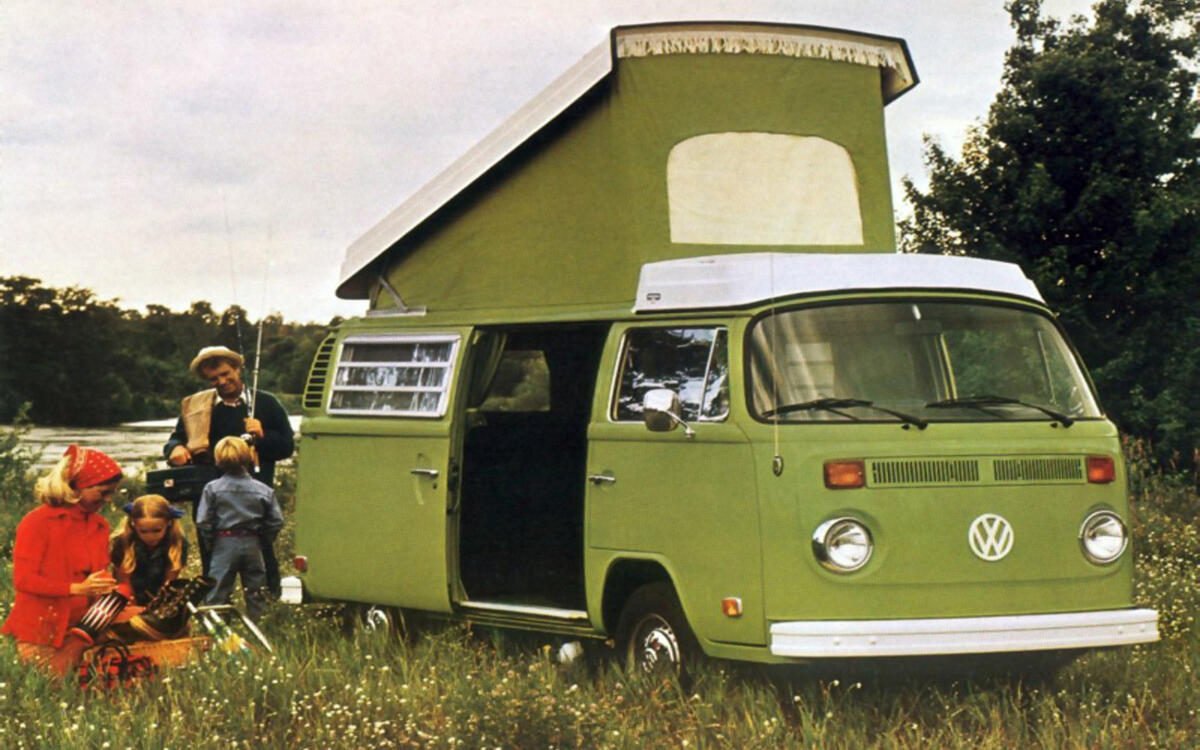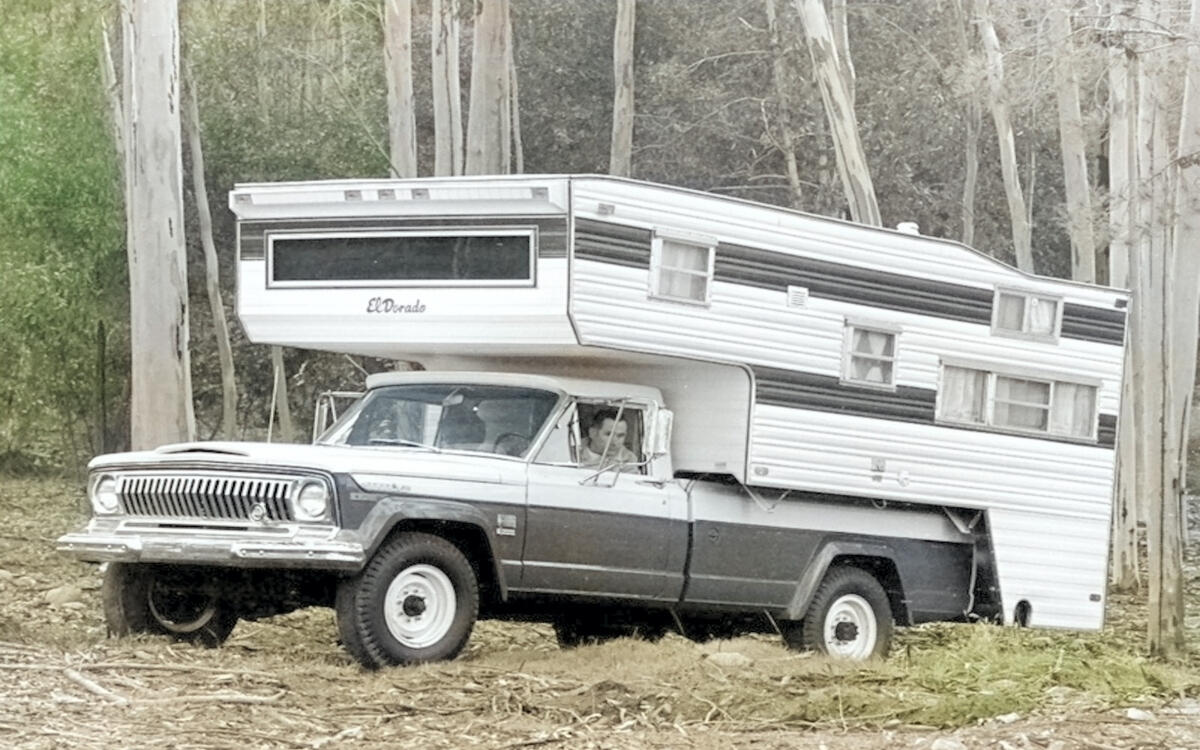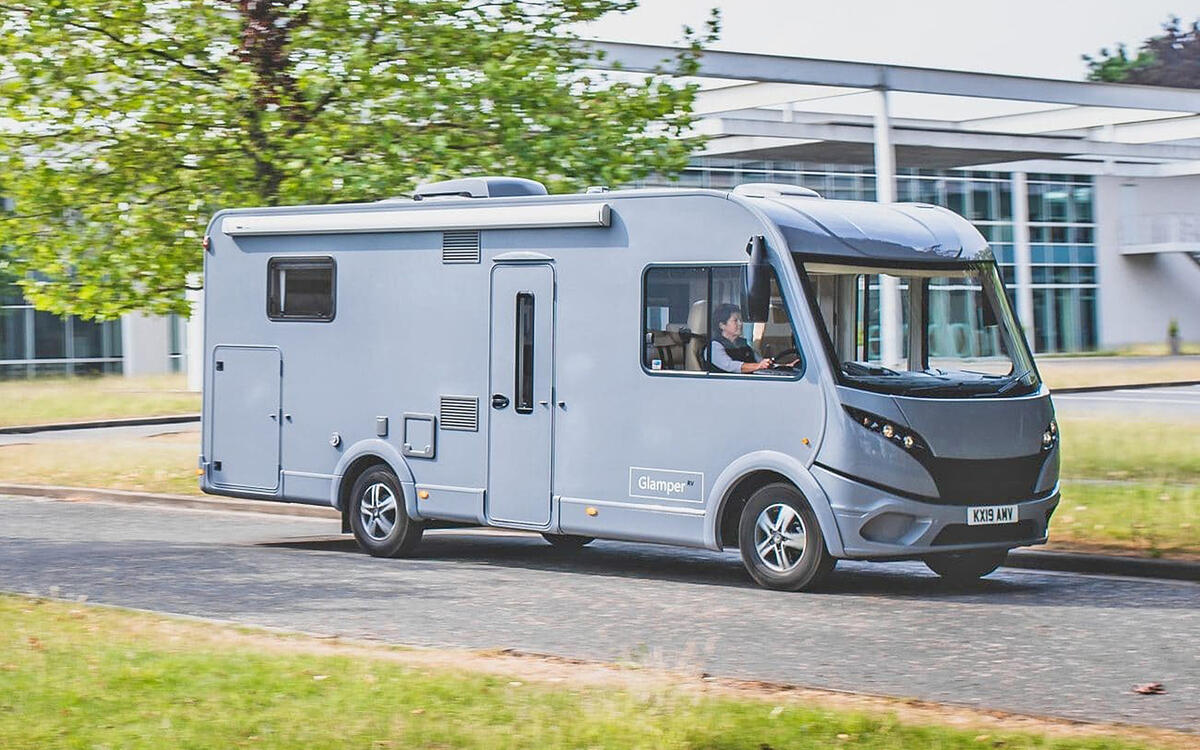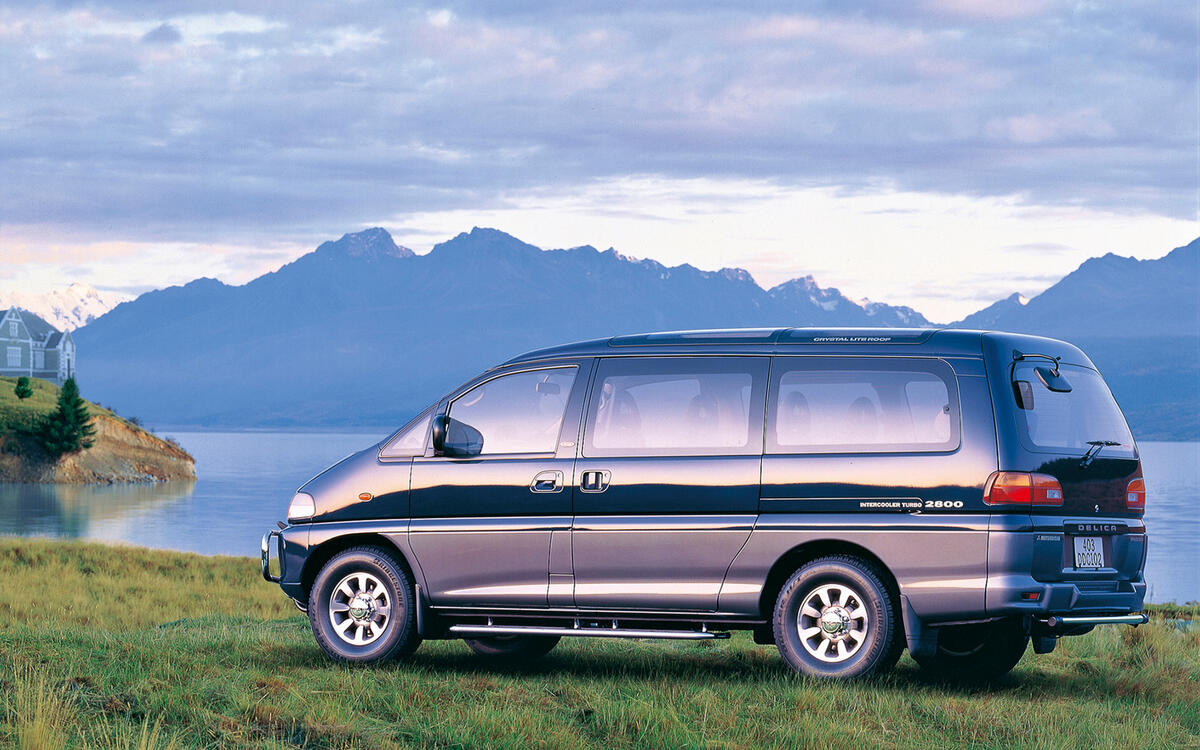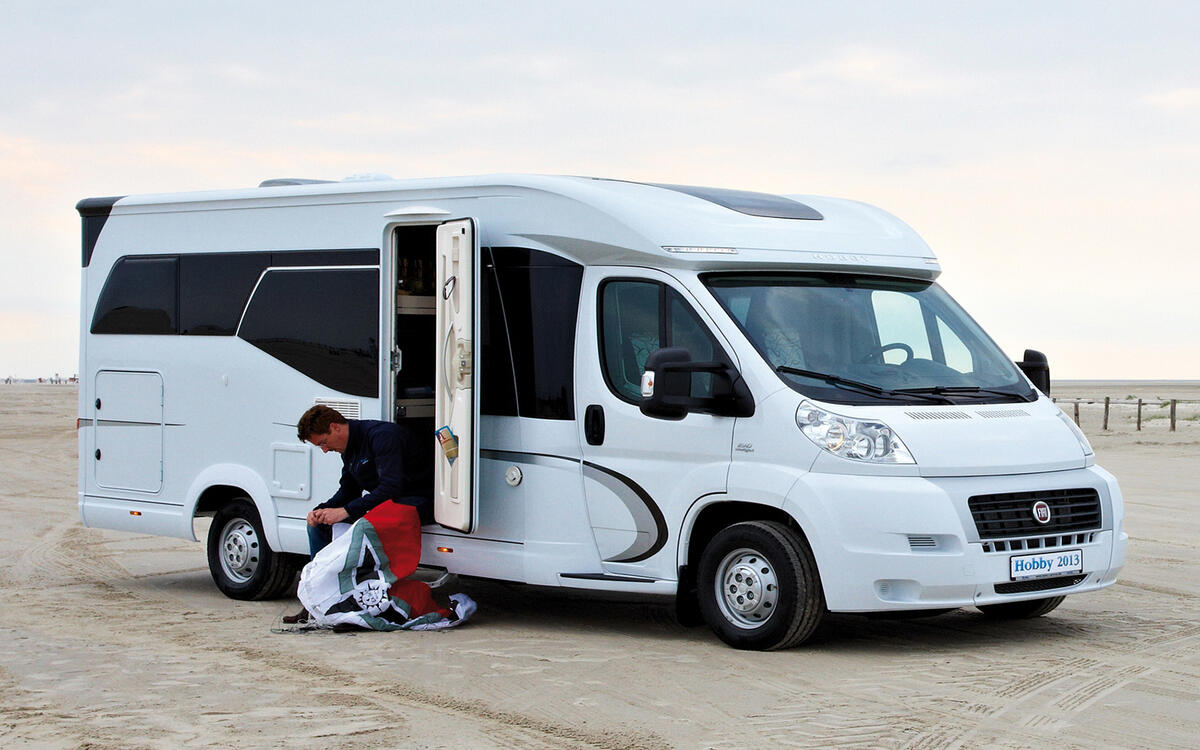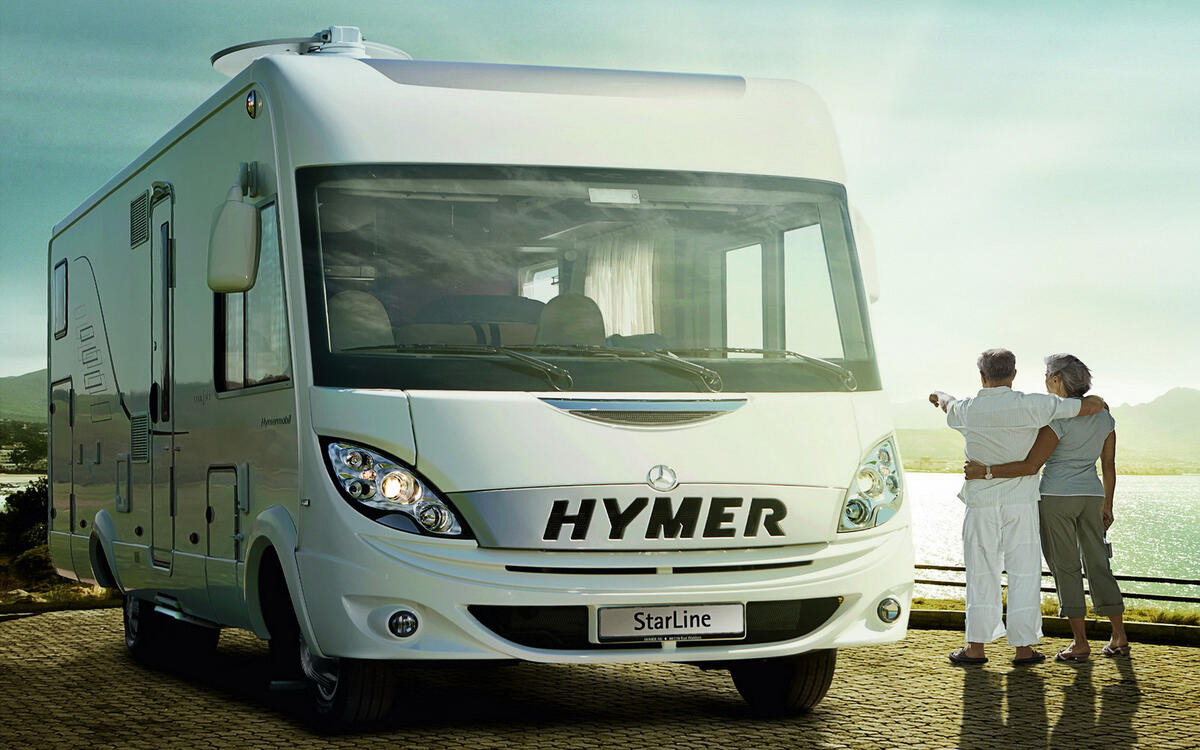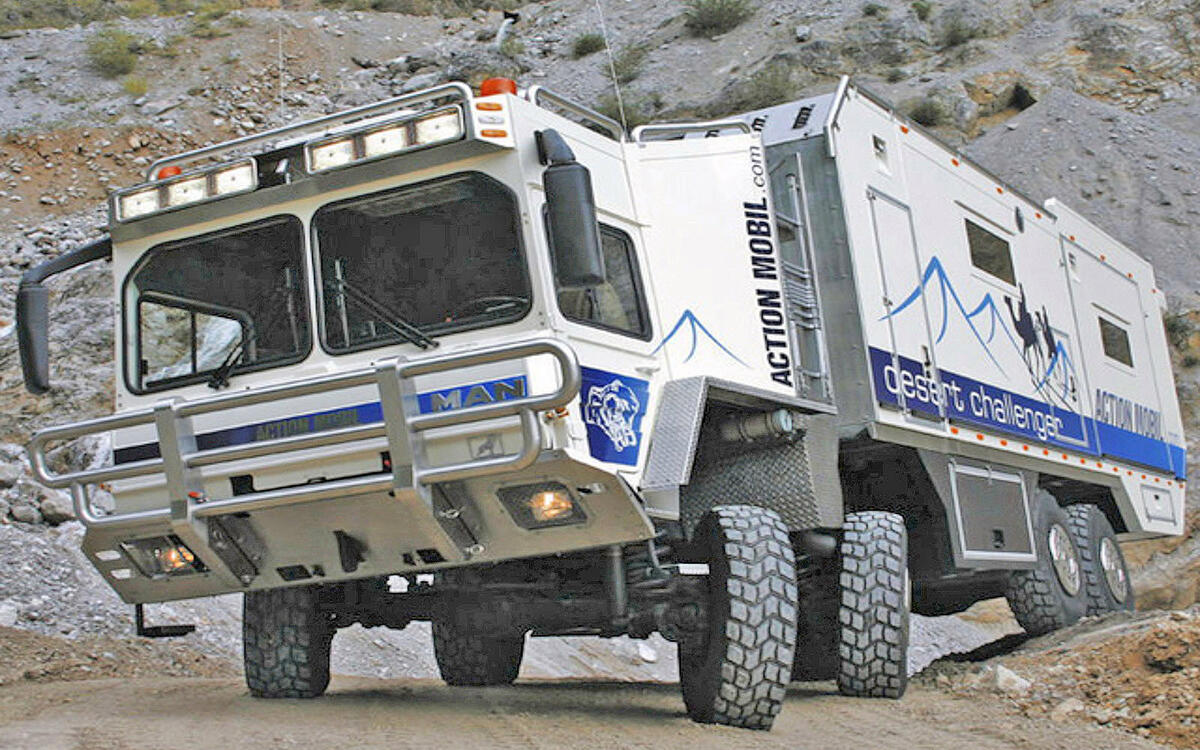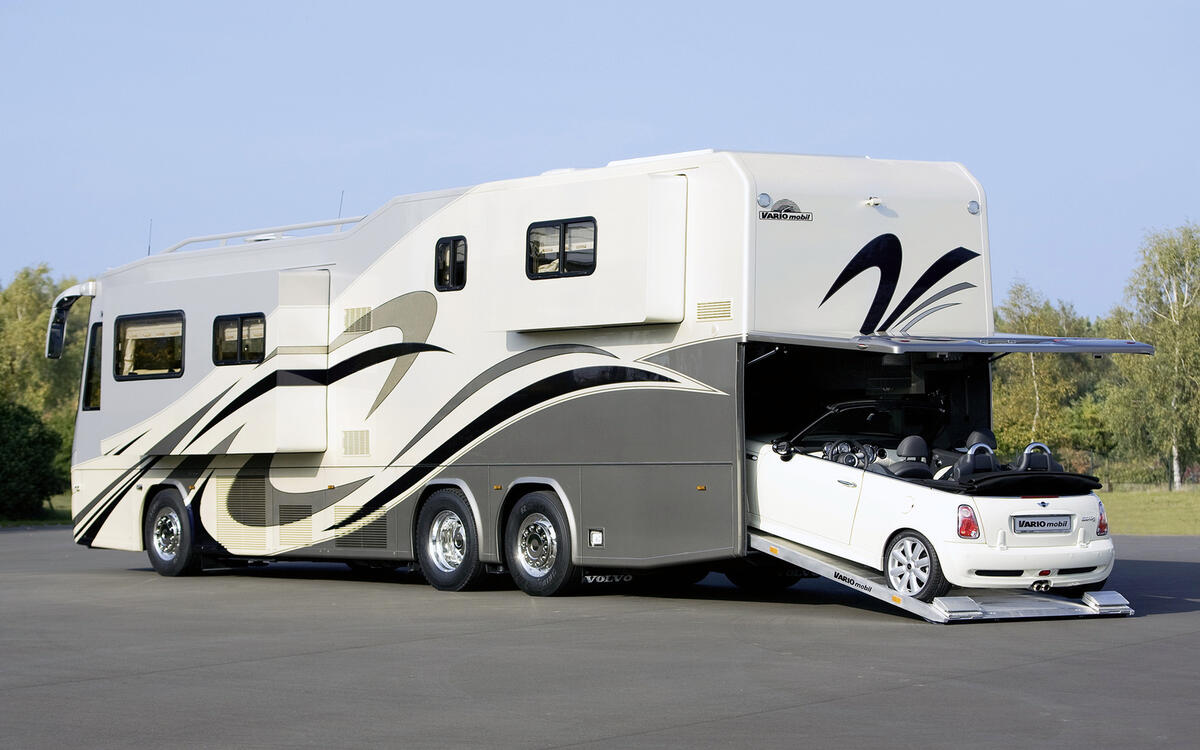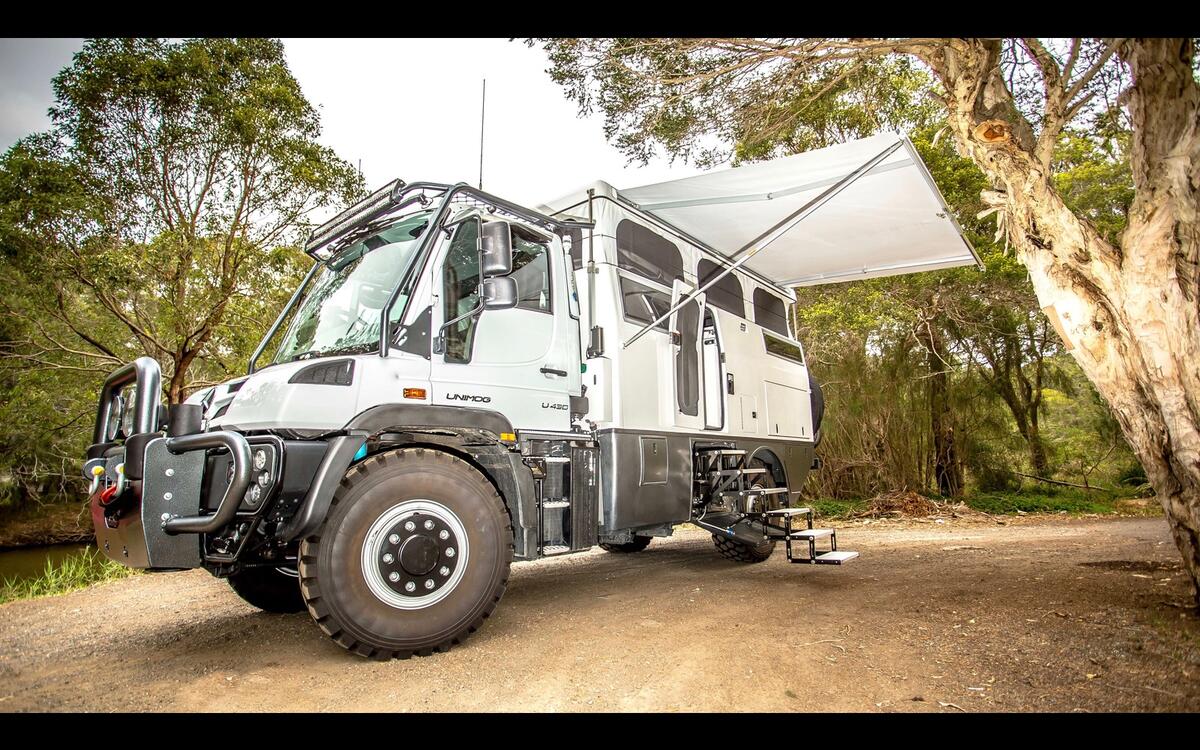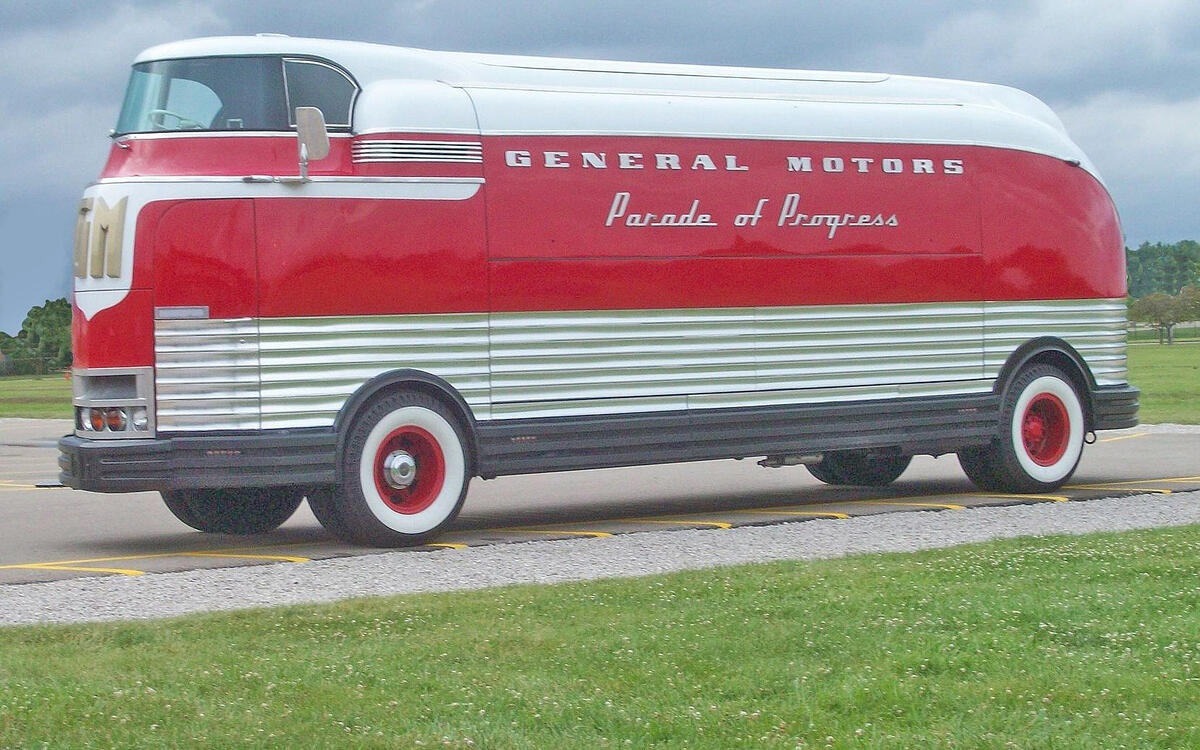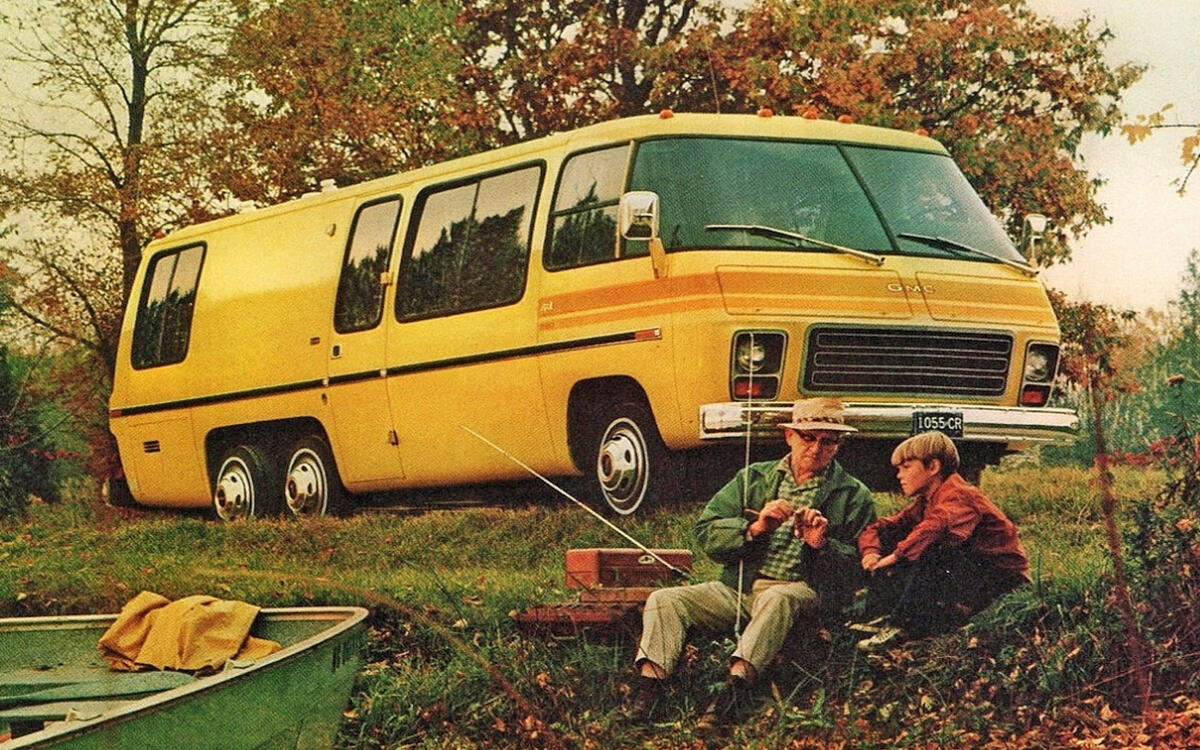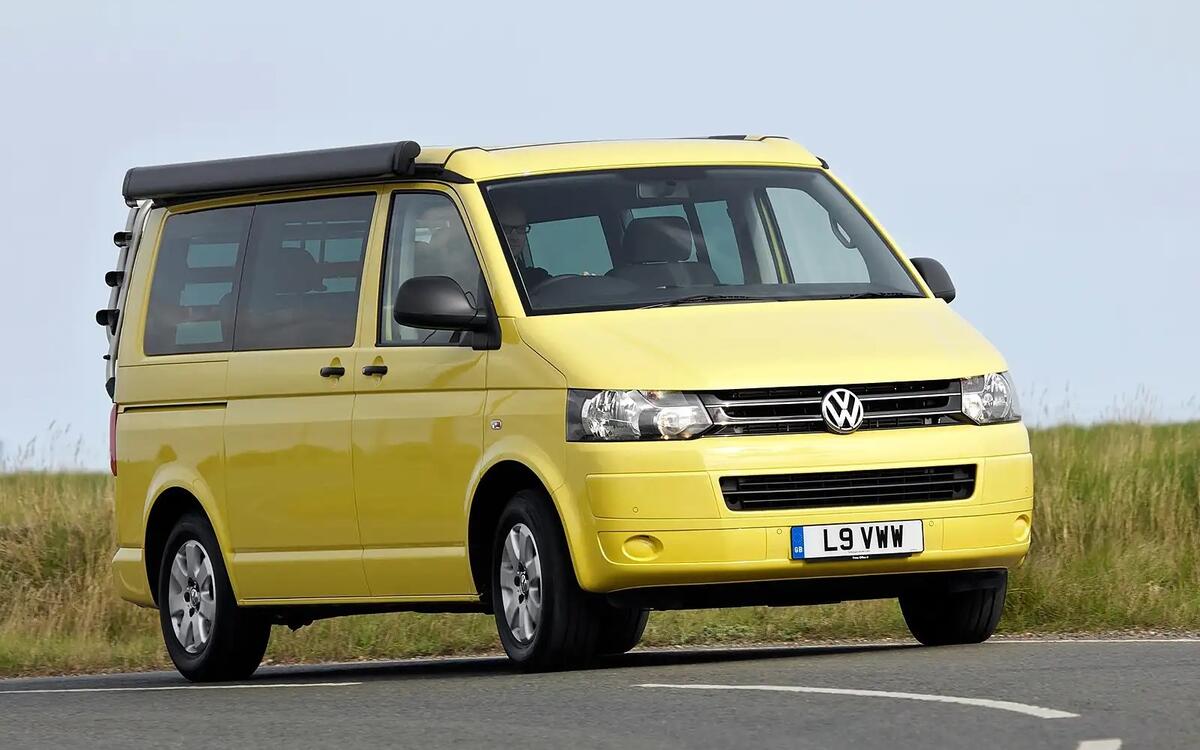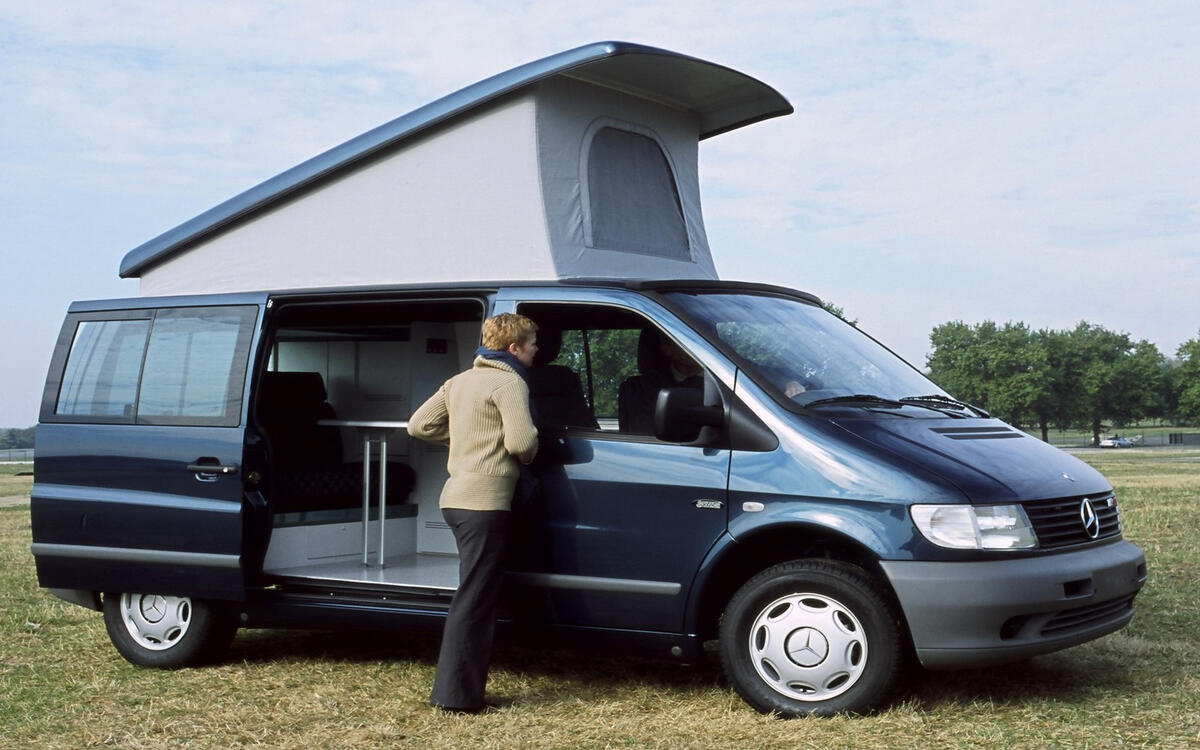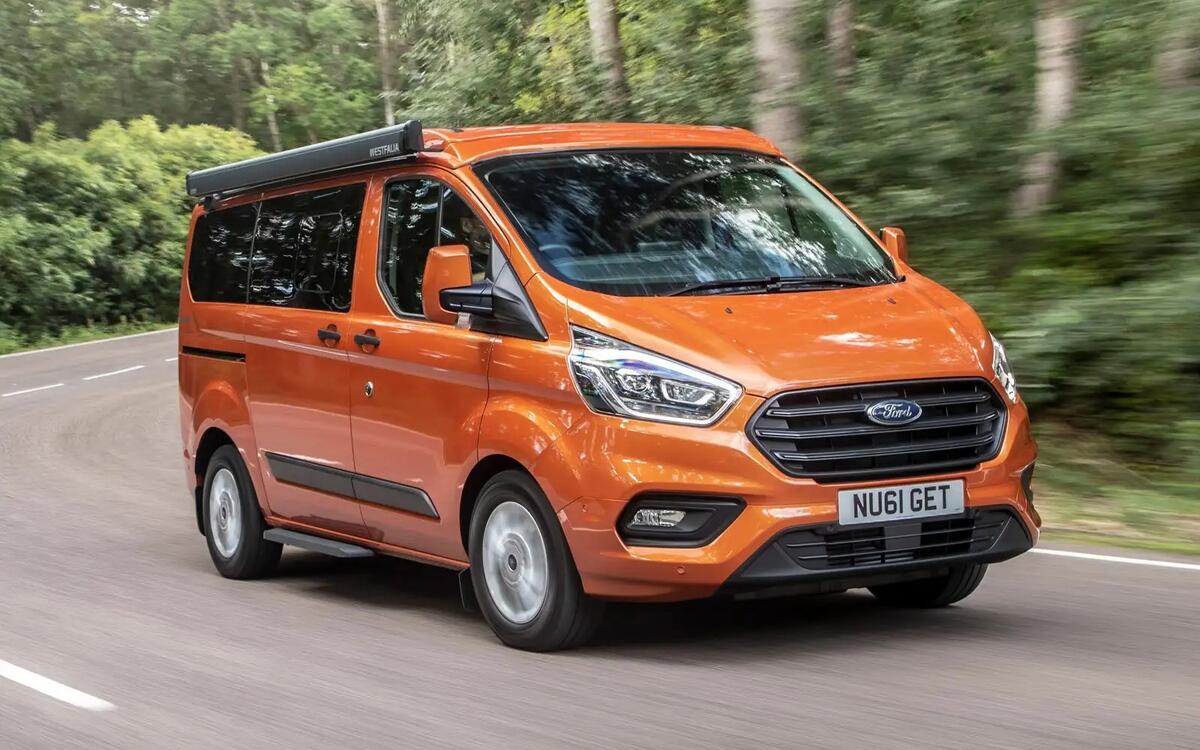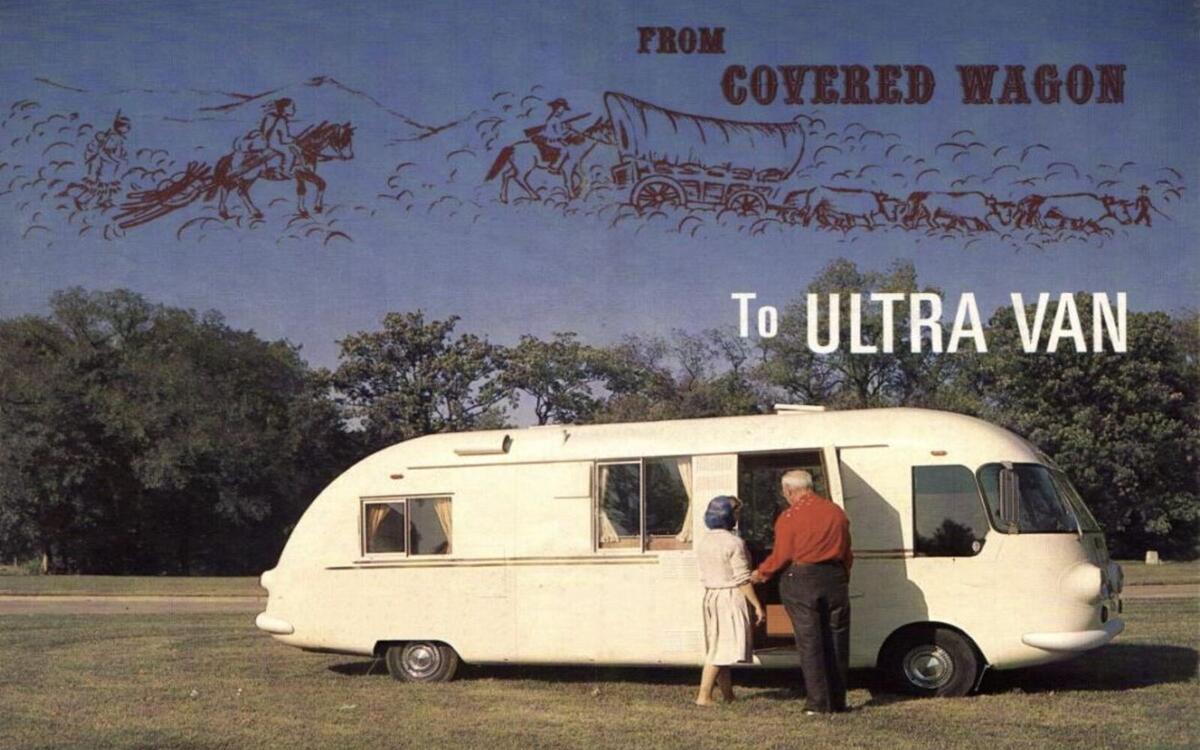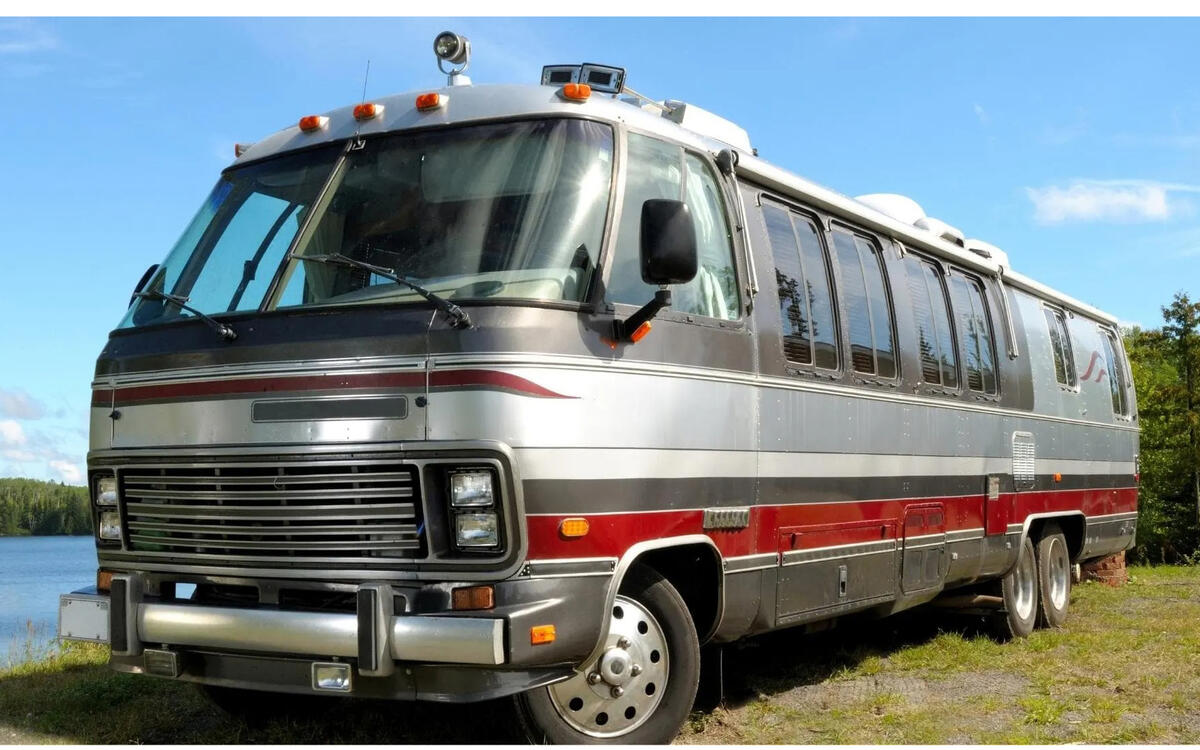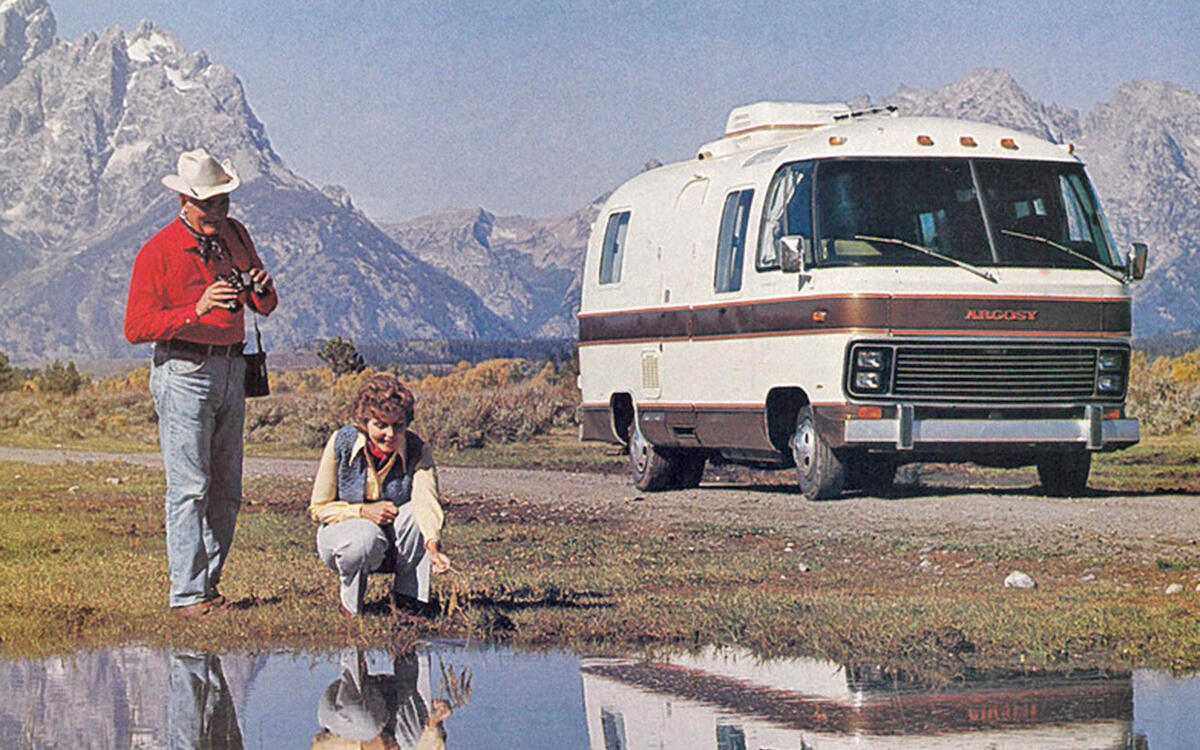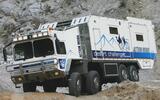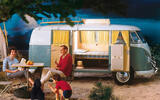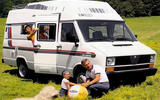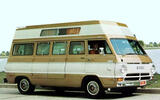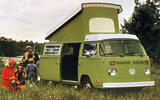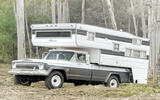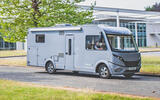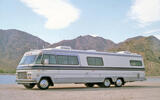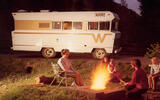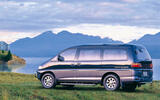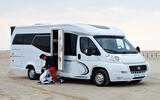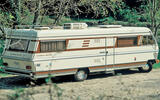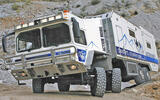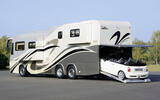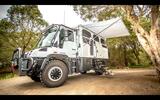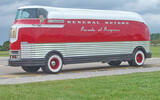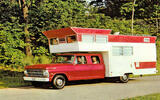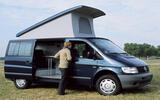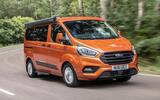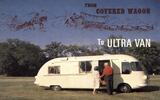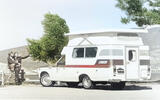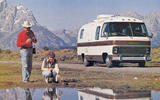 Slide of
Slide of
Home on the road.
Over the years, there’s been an array of exceptional motorhome designs such as those wrapped in shiny aluminium, those with chunky tyres to tackle harsh deserts and those that are so huge that they should have their own postcode. Here’s our pick of the best:
 Slide of
Slide of
Volkswagen Splitscreen
It was 1950 and Dutch businessman Ben Pon was visiting the Volkswagen factory where he witnessed staff lug parts around on a small van that used a Beetle chassis and from this experience the T1 was soon born. German coachbuilder, Westfalia, worked closely with Volkswagen in 1951 to create what would be one of the world’s first and most famous campervans.
Inside, it had a clock and a radio on the dashboard, a kitted-out kitchen with a fridge and an extending roof. In 1960, the booming hippy movement saw the T1 being the camper of choice due to its low running costs.
 Slide of
Slide of
Alfa Romeo 35 AR8 Ravello
We’re more used to Alfa Romeo giving us B-road-munching sports cars like the Spider or GTV but in 1979, the then-new Fiat Daily van was also marketed as an Alfa Romeo AR8 Ravello; Alfa pinned their iconic V-shield to the front to differentiate it. Inside, two captain’s swivel chairs sat upfront which could be rotated to face the rear two seats, a table could then be clipped into place giving travellers a fine dining experience. At night, the table would simply be stowed away, and the front and rear seats would fold flat creating two single beds.
 Slide of
Slide of
Dodge Sportsman A100
Although originally offered in a van, if you approached Dodge in 1969 with an A100 or A108, which was the longer wheelbase model, they would offer a full camper conversion. As standard, they would throw in full foam, all-vinyl front bucket seats but buyers could spec a kitchen with a hob and oven, vinyl floor with a square pattern, a dining area, and the ability to sleep three with its fold-out beds. Topping off the exterior was two-tone paint, large round headlights, a mass of chrome touches and a split windshield.
 Slide of
Slide of
Volkswagen Bay Window
After Volkswagen had produced 1,477,330 buses, the T1 bowed out in 1967 to make way for the new Bay Window camper. Its shape was squarer than that of the T1, its flat face now had different headlights and a vent just below the single windscreen and its suspension now had a stabilising bar at the rear.
Campers had a water-cooled fridge, a fold-out gas cooker, tables and beds that could sleep four. The roof popped up like that of the T1 to provide more space and the side door could be slid open so passengers could enjoy the country air.
 Slide of
Slide of
Dodge Travco
There’s just something nostalgic about vintage RVs with their overabundance of chrome, two-tone paint and quirky design features that are often lost in newer RVs today. Dodge gave buyers the choice of two layouts for the 26.5ft length on offer: one option was to have a larger wardrobe in place of a seat that turned into a single bed, with a longer seat at the back that transformed into a double bed, and the next option was a separate bedroom at the rear with a double bed.
With the Travco weighing in at just over six tonnes, the 200bhp 5.2-litre V8 was enough to shove it to a reasonably impressive 70mph top speed.
 Slide of
Slide of
Jeep Gladiator
It’s the 1970s and you’ve just purchased a new Jeep Gladiator pickup truck, it’s several months down the line and you have a deep regret that you never bought a camper. Instead of selling your pickup, you could opt for a camper attachment that would be secured to the pickup’s bed.
Inside was an excess of wood, 70s patterned wallpaper, a separate shower/toilet and a dinette that converted to a 50in bed. Buyers could choose from three series options: Matador, Toreador and Chassis.
 Slide of
Slide of
GlamperRV Business line
When the world halted due to the dreaded Covid-19, offices around the world closed and the new norm of home-working began; GlamperRV grabbed the opportunity and created their new business line RV. Essentially, it was intended to be an office away from the home office, giving people the option to work from anywhere. It was equipped with a large central work desk, USB charge points, 5G mobile WiFi, a Nespresso coffee machine to get you through those long meetings, and a large garage space for bikes. Buyers could opt for either a 140bhp or 160bhp diesel powerplant that was mated to a nine-speed automatic transmission.
 Slide of
Slide of
Chevrolet Vogue
The Winnebago was on top of the RV world, and it was time it was shoved aside according to Los Angeles RV visionary, Ottie Alburn. A new company rose to the challenge, Vogue, and all Vogue RVs would be custom-built and manufactured from 1974 to 1999. Sizes varied but started at 24ft (288in), spanning to a lengthy 45ft with a rear double axle.
There was a range of petrol and diesel engines to choose from, but the 7.4-litre Chevrolet engine produced around 340bhp and was the most popular. The company was sold in 1990 and was then gobbled up by larger luxury bus firm Featherlite in 1998.
 Slide of
Slide of
Winnebago Brave
It could easily be considered one of the most iconic RV shapes because of its steep sides, tacked-on headlights and flat face. Their metal facades often had a ‘W’ livery with either orange, olive green, red or yellow striping, just in case its lumbering presence wasn’t enough to set it aside from competitors.
If you had a large family, you could opt for the longest 28ft (336in) variant or if it was just a holiday for two, the base Minnie Winnie would’ve done the trick, but whatever your choice was, you’d still get an American V8.
 Slide of
Slide of
Mazda Bongo Friendee
Volkswagen’s EuroVan Westfalia was largely popular, but Mazda hit back in 1995 with the Friendee and offered something the EuroVan and most other campers could not: the ability to go off-road. It was offered with a decent engine range starting with a 2.5-litre turbo diesel that was paired to an automatic gearbox, while a facelift variant introduced a manual gearbox, a 2.0-litre petrol and a 2.5-litre V6 engine, and for the more adventurous traveler, there was a four-wheel drive option.
Inside, it’s an eight-seat MPV until the seats were folded flat, creating a double bed. If you had friends, you could opt for the Auto Free elevating roof that could sleep another two people.
 Slide of
Slide of
Mitsubishi Delica Space Gear
Like the Bongo, the Delica Space Gear wasn’t quite a bona fide camper until many conversion companies got their hands on it and began fitting dinettes. Out of the factory, you still had the option to fold the seats flat and have a double bed and there was still the option of four-wheel drive but if you fully-specced the Space Gear, you’d have a powerful off-road camper. The base four-cylinder 2.0-litre produced 113bhp but there was a range-topping 3.0-litre V6 available with 185bhp.
 Slide of
Slide of
Hobby PremiumDrive
These can often be spotted around Europe being tailed by endless queues of traffic, but the Fiat Ducato-based PremiumDrive offered a modern home away from home with its LED lighting, drinks cabinet, four-berth layout and kitchen equipped with hob, oven, sink and tall fridge. If you brought a BBQ on your trip, there was also a fold-out awning, and at the rear was a bike rack. Earlier models were slightly underpowered, however, as the 2.3TD engine produced just 130bhp.
 Slide of
Slide of
Hymer 900
It had all the 1980s RV design cues such as two-tone paint, which was often brown and white, a large aluminium grille that wrapped around the entire front, boxy styling and a split windscreen. Inside, there was ample space and depending on what layout you chose, you could have three seats at the front, two and a dinette, or two separate single seats.
A separate roof-mounted air conditioner kept things cool and a separate bedroom with a double bed sat at the rear. It was powered by a Mercedes 5.7-litre straight-six that only produced 128bhp, giving it a 59mph top speed.
 Slide of
Slide of
Hymer Starline
Most Hymer campers sat either on the Fiat Ducato or Mercedes platform, the Starline’s platform being the Mercedes’. Things had improved over the old 900 mentioned previously and buyers now had a choice of 163bhp or 190bhp turbodiesel powerplants and rear-wheel drive.
Buyers could choose from three layouts, two had an open bathroom with an optional partition, a deeper kitchen and an additional bench seat. If you preferred to splash out on a large comfortable bed, a queen-sized bed could be specced or you could have two single beds that connect to make a double.
 Slide of
Slide of
Action Mobile Desert Challenger
Although it looked like a must-have vehicle for a post-apocalyptic world with its rough exterior and superfluity of lighting, the Desert Challenger was an eight-wheeled palace, complete with a separate stainless-steel kitchen. The offroad goliath measured 3m wide, 4m high and 12m long, while its 33-tonne mass was shoved along by a 600bhp engine.
Press a button and the oriental-styled living room would extend by 5m, whilst a 300 litre walk-in fridge kept food cool and 2400 litres of drinking water could be stored.
 Slide of
Slide of
Vario Perfect 1200 Platinum
Things have changed drastically from the RVs of the 70s and today some come equipped with garages big enough for an R56 Mini and sometimes even a Porsche 911, spec dependent. The Platinum sits on a Mercedes Actros heavy truck platform and is powered by a 530bhp diesel engine which is plenty to shove its 12m-long frame down the road on a self-steering tailing axle.
Step inside and you’d instantly realise why it costs nearly £1m: the interior oozes class, from the use of white leather to ambient lighting, while a 17,000W onboard water heater eliminates any need for a gas supply.
 Slide of
Slide of
Earthcruiser Unimog
Combine a Unimog U 430 with a camper and you get the Earthcruiser, an off-road mobile home that can navigate challenging terrain with ease thanks to its chunky off-road tyres and 300bhp powerplant. In standard form, it has tanks that store up to 860 litres of water and 800 litres of fuel, two fridges, an electric winch, washing machine, BBQ, a chainsaw and five external CCTV cameras. It’s good for minus 40-degree Arctic temperatures and it even has its own four-point lifting system for changing its tyres.
 Slide of
Slide of
GM Futurliner
It was 1939 and GM planned to wow the American public with its 20ft-tall bus from the future - from outside, it ticked all the RV boxes as it was long and wide. GM’s intentions, however, weren’t to create a motorhome but to showcase to the public that technology and innovation were barreling forward, and so 12 were made to take part in America’s ‘Parade of progress’. Afterwards, the 12 vehicles were sold and one was converted to a motorhome, complete with a bar and diner seating.
 Slide of
Slide of
GMC Motorhome
Built from 1973 to 1978, the GMC Motorhome was available in both 7m and 7.9m lengths. Earlier variants had the 7.5-litre V8 from the Oldsmobile Toronado while later models used a less powerful 6.6-litre from the Buick Riviera; all variants were front-wheel drive. Like other RVs of the era, buyers could choose from an array of interesting colours such as Camel, Bittersweet (burnt orange), Parrot Green, Pineapple Yellow and Sky Blue.
 Slide of
Slide of
Ford Camper Special
Those looking to buy an F-250 or F-350 in the 70s could spec their new pickup with everything that was needed to turn it into a camper. This included a 12-volt wiring harness, a rear sliding window, a cable that would allow for exterior and interior lighting and a larger 25-gallon fuel tank, taking the total to 44.5 gallons. In F-250 form, buyers could slide in a 3.2ft camper box that could sleep two people, while the larger F-350 could take a 4.2m camper box. Pay Ford a little more and they’d even assist with sourcing and fitting the perfect camper box.
 Slide of
Slide of
Volkswagen T5 California
When it arrived in 2005, it was a breath of fresh air for the campervan world: bright colours, economical engines and quality fixtures and fittings. If your pockets were deep enough, you could have some additional camping gear such as a parking heater, fridge, sink, awning, gas cooker and wardrobe, but even if you opted for the base model, the rear bench would fold flat and provide a sizeable double bed. For those who had kids, there was an additional fold-out bed above the front seats.
 Slide of
Slide of
Mercedes-Benz Vito Marco Polo
With the Volkswagen T4 Calfornia Westfalia firmly in its sight, the Marco Polo entered the market with similar Westfalia gubbins and gave those looking at a camper another choice. Inside, buyers got a rear bench that would fold flat into a bed, wooden worktops, an integrated chest freezer, sink, gas hob and a shower that plugged into a rear water tank. A roof-mounted tent also popped up to give an additional bed.
 Slide of
Slide of
Ford Transit Nugget
There have been various camper guises throughout the Transit’s lifetime, but the latest Nugget offers a fully fitted kitchen with a sink and gas stove, 40-litre fridge and onboard WiFi. The two front seats swivel around and a table sits in the middle to create a dining area, whilst the rear bench folds flat to make a bed; upstairs has a decent-sized double bed. Up front, buyers can have a 182bhp 2.0-litre diesel which is paired to a six-speed auto ‘box, or a 128bhp variant.
 Slide of
Slide of
Corvair Ultravan
If you squint your eyes a bit, you can almost see a wingless aeroplane and that’s because the Ultravan was designed by an aircraft designer in the early 60s. Underneath the lightweight monocoque structure lied a stretched Chevrolet Corvair and it used the same 140bhp flat-six, driving all its power to the rear wheels.
When fully equipped with a bed, fridge, cabinets, bathroom and seating, it still managed to weigh less than a 1962 Impala. It’s said that only 370 Ultravans were built and as the Corvair came to an end, 40 Ultravans were fitted with a Corvette-sourced small-block V8 instead – which must have been quite a hoot.
 Slide of
Slide of
Toyota Hilux Chinook
Before the time of the four-wheel drive Hilux, the 1977 Chinook camper sat on a rear-wheel drive layout as that’s all that was available for the N20 Hilux at the time, although many were converted to four-wheel drive later. Unlike similar pickup campers of the era, the camper box and driver cabin were connected, allowing an easy transition between having to drive and relaxation.
It was well stocked and had a hob, stove, fridge, sink and it could sleep four people thanks to the dinette that converted to a bed and the additional two overhead hammocks.
 Slide of
Slide of
Airstream 350
Over the years, Airstream has created some incredible campervans and caravans and they’re famed for their aluminium-finished bodywork. They started to build Class A motorhomes back in 1974 and used a lightweight, strong and aerodynamic fuselage. In 1991, the 350 came along with a 7.4-litre V8 powerplant, cruise control, Corian-type countertops, VCR, planked oak veneer flooring and real wood venetian blinds.
Buyers could opt for 6-way Power Co-Pilot Seats, window awnings, foam mattress, 4-burner hob with oven, ice maker, a solar battery charger and, of course, the iconic aluminium finish with blue graphics.
 Slide of
Slide of
Airstream Argosy
Airstream targeted the small camper market with the Argosy while still retaining the classic Airstream look. It was based on a Chevrolet chassis and buyers could choose between a 350 or 454 V8 with the 454 engine coming as standard on the bigger 28’ model. Inside, there were lashings of wood, stainless-steel sink, gas oven, fridge and shag nylon carpets. Buyers had a lot to choose from when they were kitting it out such as a bigger 50-gallon water tank, ceiling fan and vacuum cleaner.
 Slide of
Slide of
Volkswagen ID Buzz
While the new ID Buzz has hippy characteristics like those of the 1949 Type 2 that it plays on, it’s hard to say whether we’ll look back at the ID Buzz and have the same feelings that the cult classic brings today. However, it’s aimed at a new generation, like the original was, and we’re glad that Volkswagen brought back the flat front-faced design and bulbous bodywork, in an all-electric package.
Although it’s not a bona fide camper, with the flex board in place and the rear seats folded flat, it can take a small double blow-up mattress of around 200cm in length.
Access control:
Open

